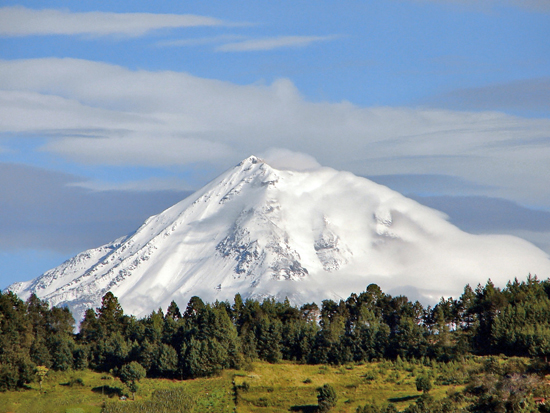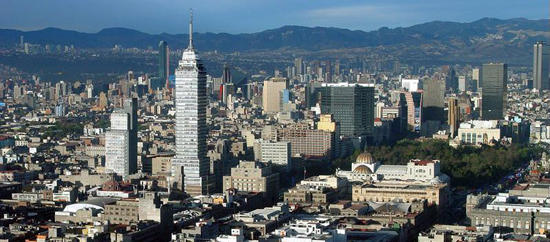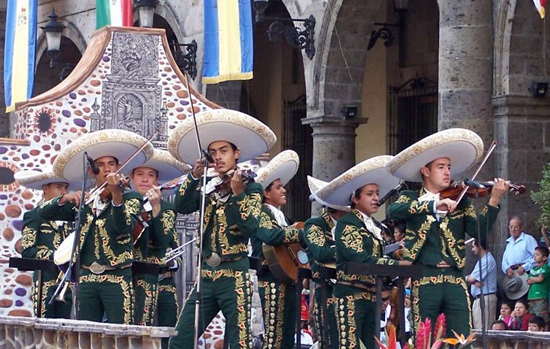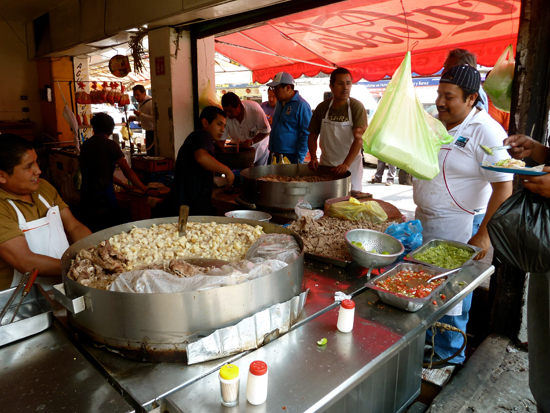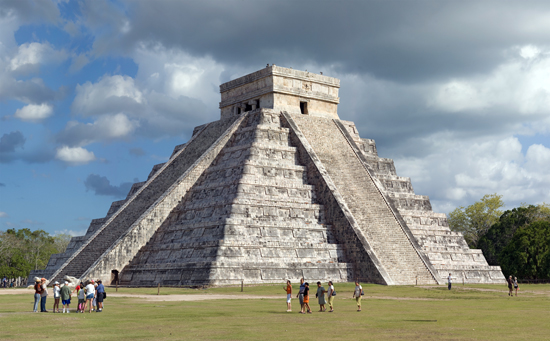Country Snapshot: Country Snapshot
Land/Geography/Regions
Located in southern North America, Mexico covers 1,972,550 square kilometers (761,610 square miles) and has nearly 9,330 kilometers (5,800 miles) of coastline along the Pacific Ocean, Gulf of California, Gulf of Mexico, and Caribbean Sea. To its north, Mexico borders the United States of California, Arizona, New Mexico, and Texas, and also shares borders with Belize and Guatemala in Central America. The country’s territory includes numerous islands including the largest, Tiburón Island, as well as Guadalupe Island and the Revillagigedo Islands.
Mexico’s landscape is diverse, from tropical jungles with mangrove forests and fertile valleys, to dry deserts, volcanic plateaus, and snow-capped mountains. The arid-to-semiarid Central Mexican Plateau covers much of the country’s northern and central regions. The Baja California Peninsula in the northwest is an arid region including the Sonoran Desert and a range of granite mountains that run down the center. Major mountain ranges include the Sierra Madre Occidental in Mexico’s northwestern and western region, and the Sierra Madre del Sur, which joins the Sierra Madres and runs through central Mexico to form the western border of the Central Mexican Plateau. The Yucatan Peninsula in southeast Mexico is the exposed portion of the Yucatan Platform that separates the Caribbean Sea and Gulf of Mexico. This region includes tropical rainforests, caves, and sinkholes.
People and Culture
More than half of Mexico’s population is mestizo, having a mixed ancestry that includes European—often Spanish—and indigenous groups. Mestizo also includes African and Asian ethnicities, though to a lesser degree. Amerindians, also called Native Americans, comprise the next largest ethnicity, and the remainder of the population is white, meaning European. The rich mix of cultures derives from the country’s colonial period, with some of Mexico’s indigenous groups including the Nahuas, Otomis, Mayas, Zapotecs, Tzeltales, and Tzotziles.
Most Mexicans speak Spanish and the country is the world’s most populous Spanish-speaking country. Despite this, the government recognizes 68 indigenous languages as well. Most of the population practices Catholicism with some incorporating pre-Hispanic Mayan traditions. Other Christian denominations include Methodist, Lutheran, Presbyterian, Jehovah’s Witness, Baptist, Mormons, and Anglican. There also are small numbers of Muslims, Buddhists, and Jews.
Noted characteristics of Mexican culture include a friendly, easy-going attitude and polite disposition. Family is held in high esteem in Mexico and large extended families come together on holidays and most Sundays, to enjoy traditional foods including enchiladas, mole, tamales, and pozole. Mariachi, a style of music that originates in Mexico, is often heard throughout the country. With diverse regional traditions evident in its food, music, clothing, art, and festivals, Mexico is one of the most visited countries in the world.
History
Mexico was home to some of the largest and most complex of the pre-Columbian civilizations in the Americas, including the Maya, Olmec, and Toltec. Evidence of their settlements date as far back as 20,000 years. In 1521, the Aztecs were conquered by the Spanish, who began to enslave the indigenous people for mining and farm labor. Mistreatment along with European diseases nearly wiped out the 25 million-plus population of Native Americans by the dawn of the 1600s. The following period saw Africa slaves arrive to replace the native labor force.
In 1808, when Napoléon Bonaparte seized much of Spain, the power base of the Spanish colonists in Mexico was called into question by the wealthy upper class. Following a decade of bloodshed, a severely weakened Spain granted Mexico its independence in 1821. Mexico endured decades of chaos following independence, with the government changing hands dozens of times. After Texas seceded from Mexico in 1845, Mexico entered into war with the United States and lost California, New Mexico, and parts of Texas and Arizona to the US.
Excessive debts with France, Spain, and Great Britain added to Mexico’s problems, but after decades of warfare the country finally established a tentative peace. It was not to last, however, and Mexico’s “social revolution” and numerous civil wars took the lives of an estimated 2 million people. When peace returned in the mid-1920s, leadership was still unclear, though by 1934, the Institutional Revolutionary Party (PRI) gained control and attempted to reform the government and redistribute national wealth.
Numerous political scandals, economic panics, drug wars, and corruption plagued Mexico for decades, with terrorist and separatist movements also flaring up on occasion. The early 21st century saw the leaders of the three main political parties sign the Pacto por México, a multi-party alliance created in the hopes of passing necessary reforms in education, finance, and telecommunications. Despite its status as a middle-income country, almost half the population lives in poverty. The US and Mexico have implemented efforts to fight issues affecting both nations, such as intellectual property offenses and drug trafficking. Piracy and counterfeiting rates are beginning to decline, while a security agreement between the two countries aim to fight drug trafficking and money laundering.
Climate and Biodiversity
The climate of Mexico varies, divided by the Tropic of Cancer into a temperate zone in the north and a tropical zone in the south. Most of the country has warm temperatures, though northern regions have colder winters while the average temperature in the south is between 24 and 28 degrees Celsius (75–82 degrees Fahrenheit). Hot and humid conditions prevail along the coast, particularly during summer, while the most rain falls in September. Mexico’s rainy season lasts from June to mid-October, with July typically the wettest month and February the driest. Generally, more precipitation falls in the south than in the north. Inland areas with higher elevations have a drier and more temperate climate.
Mexico is one of the most biodiverse countries in the world and its diverse geography includes distinct flora and fauna. The country is home to hundreds of reptiles, amphibians, and mammals, including armadillo, puma, bear, boar, and several species of monkeys. The country has several protected areas, accounting for 170,000 square kilometers (65,637 square miles) and includes 34 biosphere reserves and 64 national parks.
Nearly 26,000 types of flora can be found in Mexico, including many types of agave including the native blue agave plant. Essential in the making of tequila and mescal, agave can also be eaten in sap and flour form and used to make twine. Sycamore trees, ferns, orchids, bromeliads, palms, cacti, and poinsettia also thrive in Mexico.
Economy
Mexico boasts one of the largest economies in Latin America, and since the North American Free Trade Agreement (NAFTA) began in 1994, manufacturing has become the country’s top industry. This includes automotive, aerospace, electronics, and medical device manufacturing. Other significant industries are tobacco, petroleum, tourism, and mining. Top exports are vehicles and vehicle parts, crude petroleum, and computers. Quick growth resulted in economic inequality between the country’s northern and southern states as well as its rural and urban populations; nearly half the population lives in poverty. Other issues include inadequate infrastructure and the need to modernize labor laws and tax systems. Mexico City is the capital and the official currency is the Mexican peso.
Government
The United States of Mexico is the country’s official name, with the capital Mexico City. The government is a federal presidential republic with three branches: executive, legislative, and judicial. A president appoints a cabinet and serves as chief of state, head of government, and commander-in-chief of the armed forces. The president is limited to a single, six-year term and is elected by a majority popular vote.
Lawmaking authority is vested in the bicameral National Congress (Congreso de la Union), which is composed of the Senate (Camara de Senadores) and Chamber of Deputies (Camara de Diputados). Mexico’s highest judicial bodies are the Supreme Court of Justice (Suprema Corte de Justicia de la Nacion), with 11 justices and a chief justice, and the Electoral Tribunal of the Federal Judiciary, with seven judges including a court president. Lower courts include circuit, collegiate, and unitary courts, while the country’s 31 states have state and district courts as well.
Article written for World Trade Press by Brielle Burt and Jen Westmoreland Bouchard .
Copyright © 1993—2024 World Trade Press. All rights reserved.

 Mexico
Mexico 